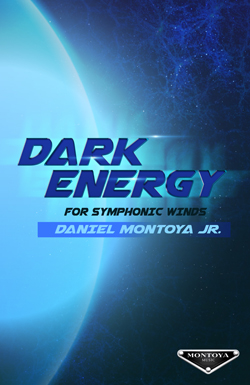
Click to Buy
The cosmological theory of dark energy in the universe is one that seeks to explain astronomical phenomena that otherwise elude simple description. For all that can be explained through the interaction of visible parts of the universe, there are still patterns of motion, rotation and expansion that don’t follow the rules of physics as they are observed. Thus, as several physicists have suggested, there must be matter and energy interacting with the universe that can’t be detected – for instance, a black hole which defies observation because of its high density but can be inferred because of how objects act when nearing it is an example of the influence of dark matter. Dark energy is even more pervasive and ethereal, accounting for an estimated 73 percent of the composition of the universe as we know it (while visible matter, such as stars and planets, comprises less than one percent). Although the influence of dark matter remains largely a mystery, it is theorized that the sheer amount of dark energy present in the universe has the capacity to completely reshape the cosmos, pushing solar systems further from each other, tearing apart galaxies and, eventually, even perhaps accelerating the velocity of all the universe’s matter to the point where it disassembles into subatomic particles (a theoretical phenomenon of the end of the universe called simply “The Big Rip”).
Daniel Montoya, Jr.’s Dark Energy is inspired by this strange phenomenon, attempting to envision within music the awe-inspiring force which this invisible entity commands. He accomplishes this in the piece through a remarkably disparate dichotomy of musical motives. The first of these two ideas is one of stasis: an immense stillness evocative of a staggering void; a steely near-nothingness through which only an occasional particle or glimmer of starlight passes. At the opening of the work, this mood is set through the use of an orchestra of crystal glasses, painting an ethereal and alien constant. Out of this shimmering unison, a sonority begins to build is long, slow tones initiated by the piano and sustained throughout by an enlarging collection of winds. Chords begin to form in the void, but avoid typical resolution – instead, oscillating through major and minor modes as though they were tumbling in a zero-gravity vacuum. As more voices enter, the texture becomes more frayed – more agitated – and accelerates until an implosion (an effect created by the performers blowing fast air and suddenly stopping simultaneously) representative of the Big Bang sets the dark energy resolutely in motion.
The second of the two musical ideas begins here, with virtuosic fluttering that give the impression of light-speed travel accompanying the opening long tones, now accelerated greatly into a repetitive rhythmic motive. Some of the space the energy traverses seems to be more congested, while other parts are more vacuous, but the motion continues on, relentless in its journey. This second mood – unlike the first, which seems completely devoid of emotion – has an imposing and almost threatening nature to it and, at its most cacophonous, bears down with a hard-edged fury. After an initial climactic encounter, the texture resets to one of sparse (but still active) surroundings. The opening mood begins to set in more firmly, presenting its more objective view in a spacious brass chorale. From there, the race is on to the finish as the moods interweave in the briskest tempo of the work, spinning out of control until briefly interrupted by the opening crystal glass unison. The musical implication is that some of the opening material will return, but the respite is broken by a return of the fast music, performed with such violence as to spin wildly apart with only the vacuum remaining – evocative of The Big Rip tearing all matter asunder, leaving only the darkness of space.
Dark Energy is Montoya’s sixth work for symphonic winds and is dedicated to David R. Gillingham.
Program note by Jake Wallace
Please credit Jake Wallace when reproducing or excerpting this program note